
It’s been almost two years since we were in Greece, and all the while these photos have been languishing in an abandoned file waiting to become the chosen ones. At last their time has arrived.
Any regular followers of the blog know I like to photograph the people of the places we visit. What catches my eye can be a colourful background; something that’s mundane but somehow also iconic; interesting movement; or images of the people that seem to capture the spirit of place.
These first three photos are of kids on a school excursion to Anafiotika, a unique neighbourhood of Athens. Anafiotika feels mysterious, unusual, and somehow impenetrable with its whitewashed walls and tiny narrow lanes and stairways. But to get there you pass through this somewhat uninviting, graffiti-and-street-art-covered passageway sprouting weeds and a few hardy mediterranean plants. And it’s here, against the background of the vibrant street art that I see the kids.
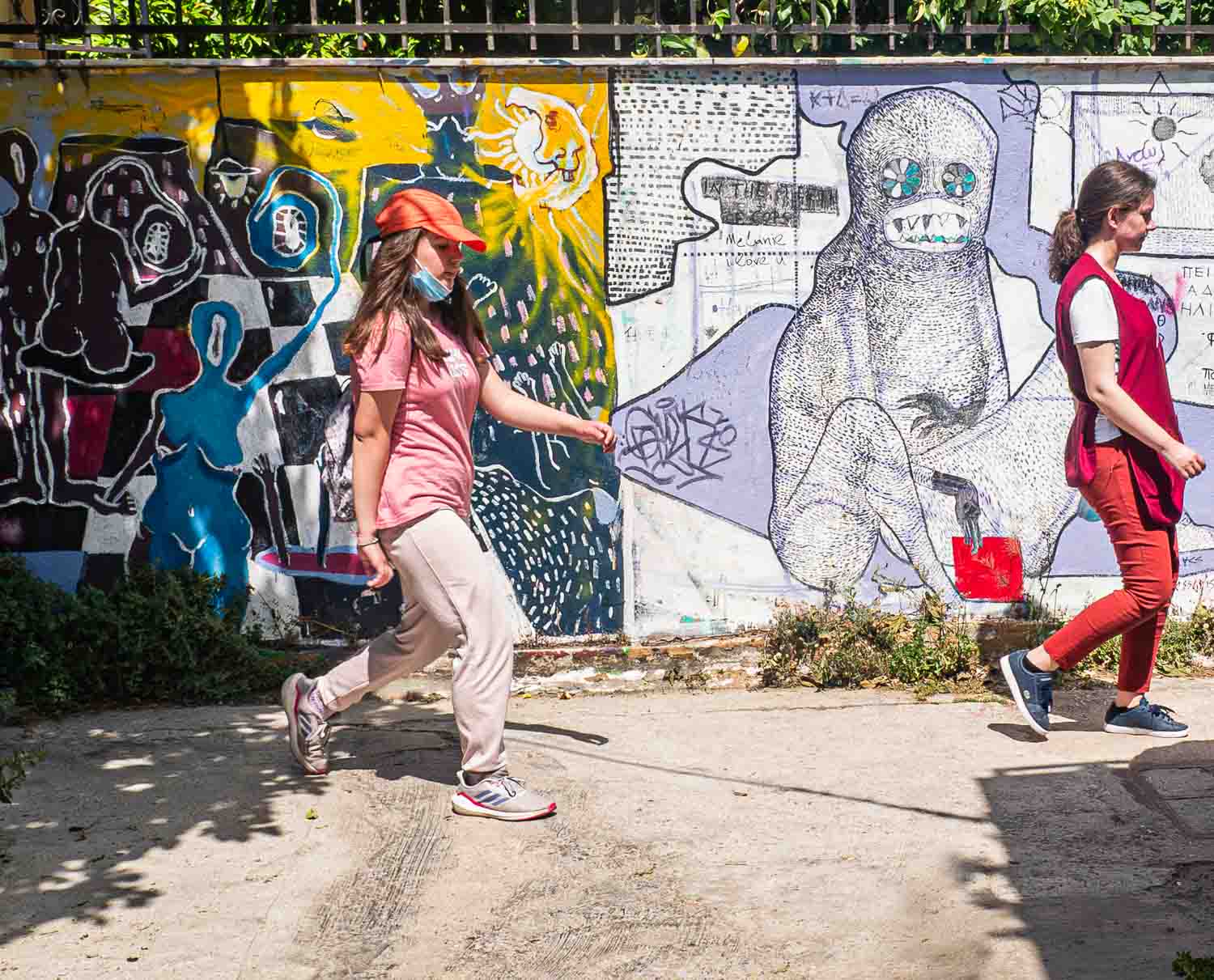
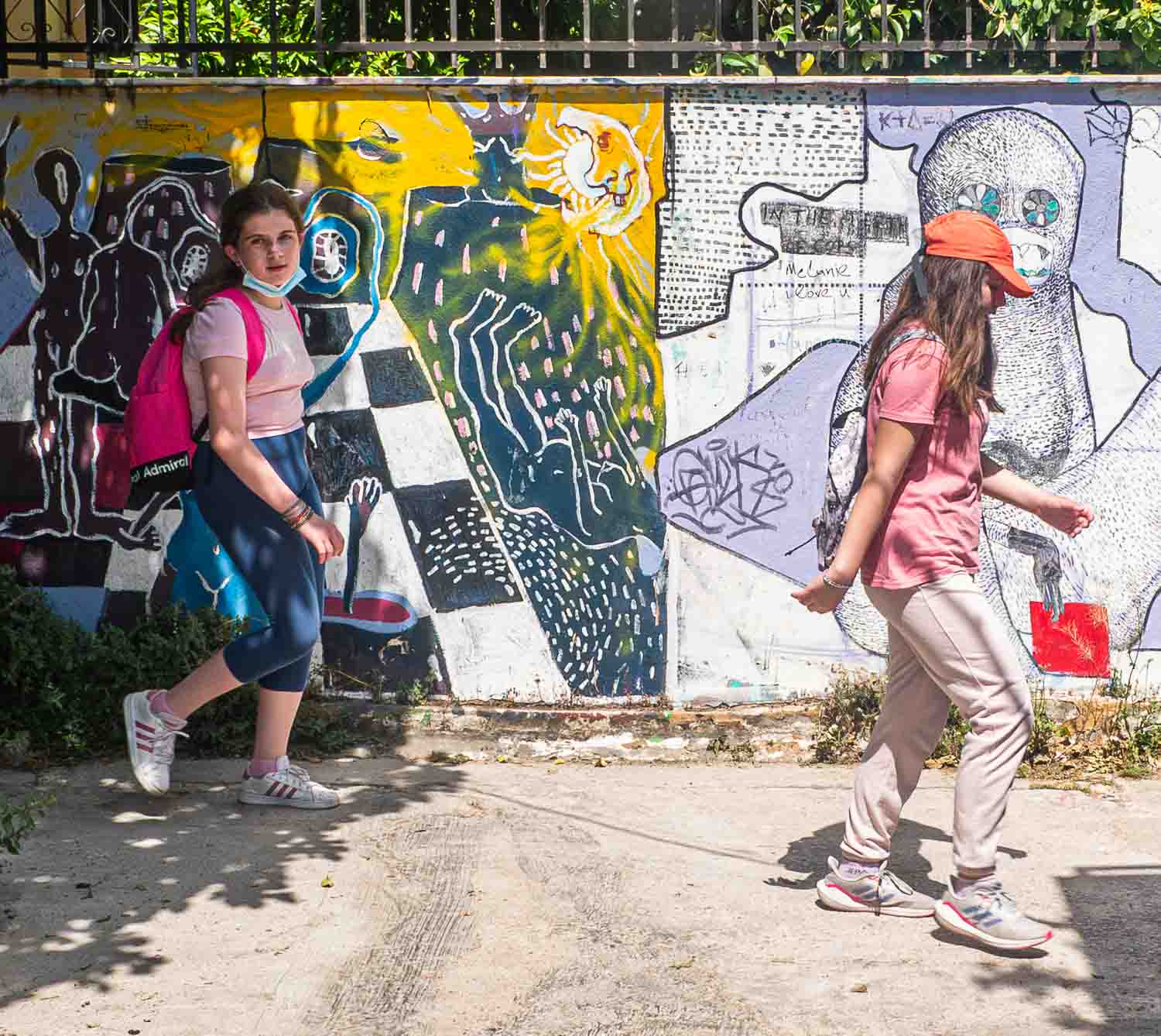
Beneath the Acropolis, along the southern side, there’s a wide pedestrian boulevard known as Dionysiou Areopagitou where tourists gather, and locals stroll at the end of the day. It’s here that I see Rainbow-Bubbles-Man. No doubt he’s hoping to entice payment from the tourists for creating such beauty. I don’t know if he makes a living at it, but he definitely makes spectacular bubbles.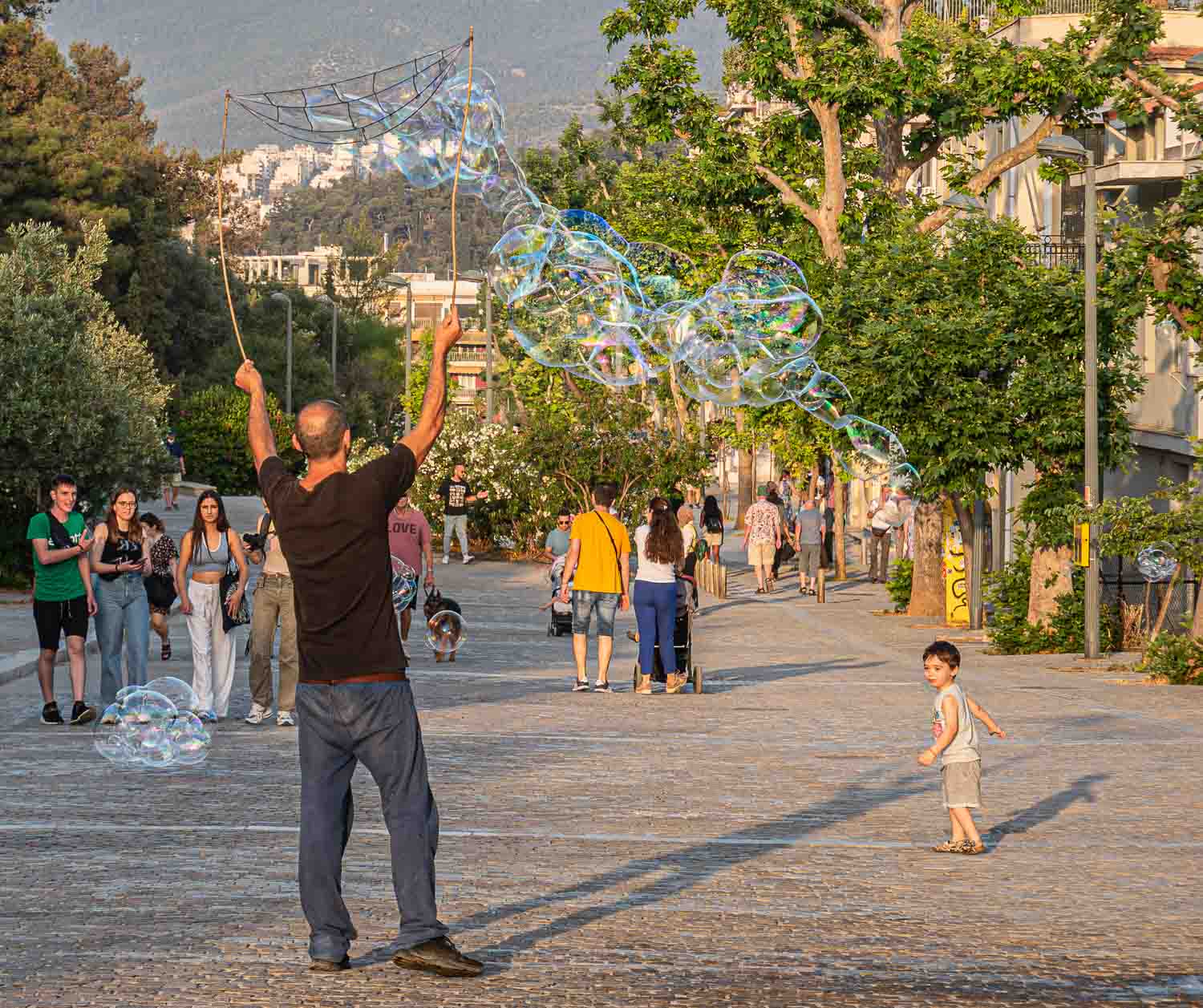

Seen in Varvakeios Agora, the central market of Athens, a Greek Orthodox priest,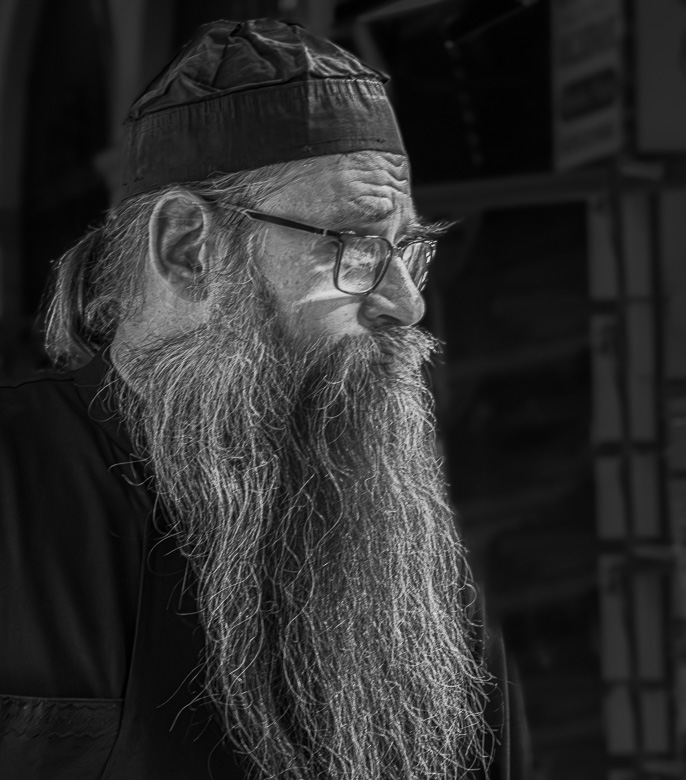
and at a cafe I play peek-a-boo with a little girl sitting at a nearby table.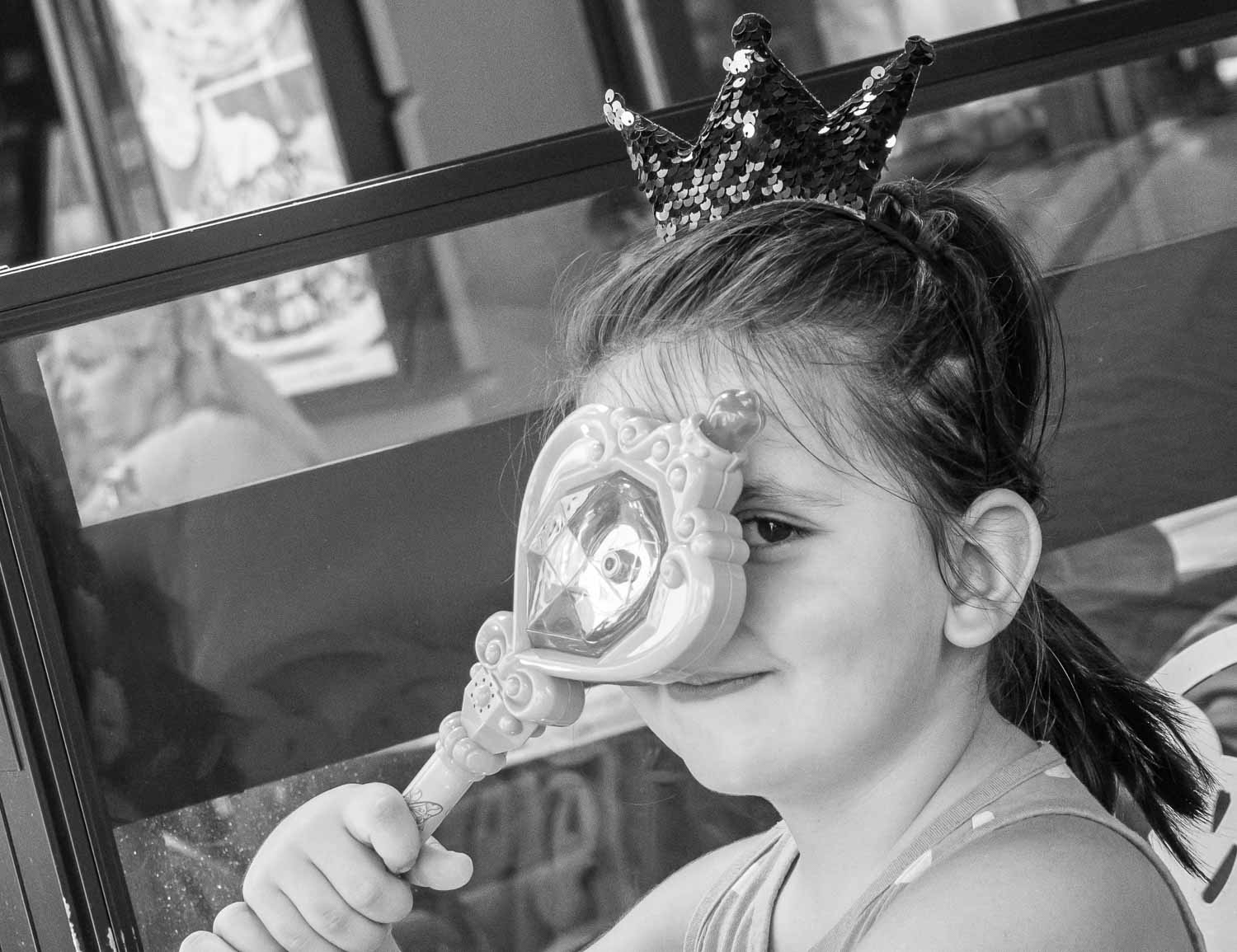
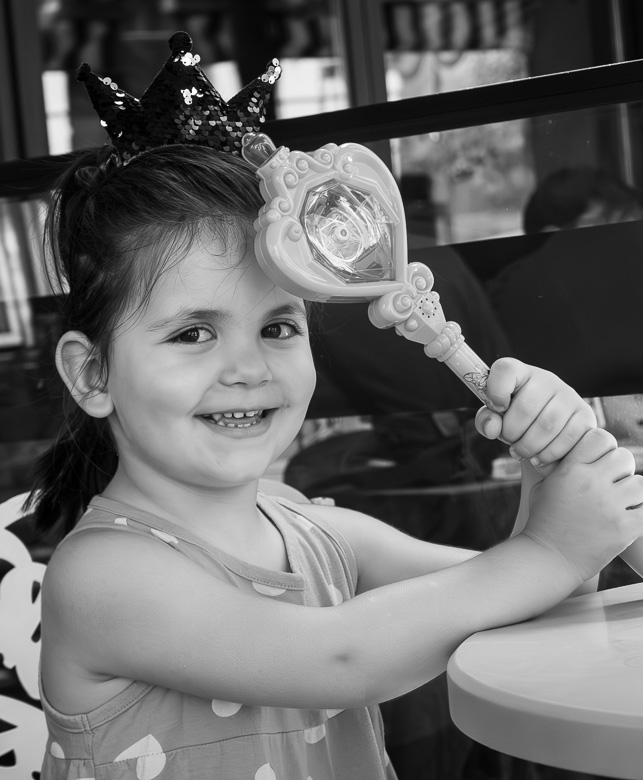
From Athens we travel by overnight ferry to Crete. We spend a few days in and around Chania, and then take a bus across the island through blooms of yellow gorse and pink oleander to Heraklion. I’d wanted to go to Heraklion to fulfill a 50-year-old yearning to see Knossos. It did not disappoint. Neither did Heraklion. We are there in June, shoulder season, and there are very few tourists. Everywhere we wander there are groups of locals, the people of the city, going about their daily lives,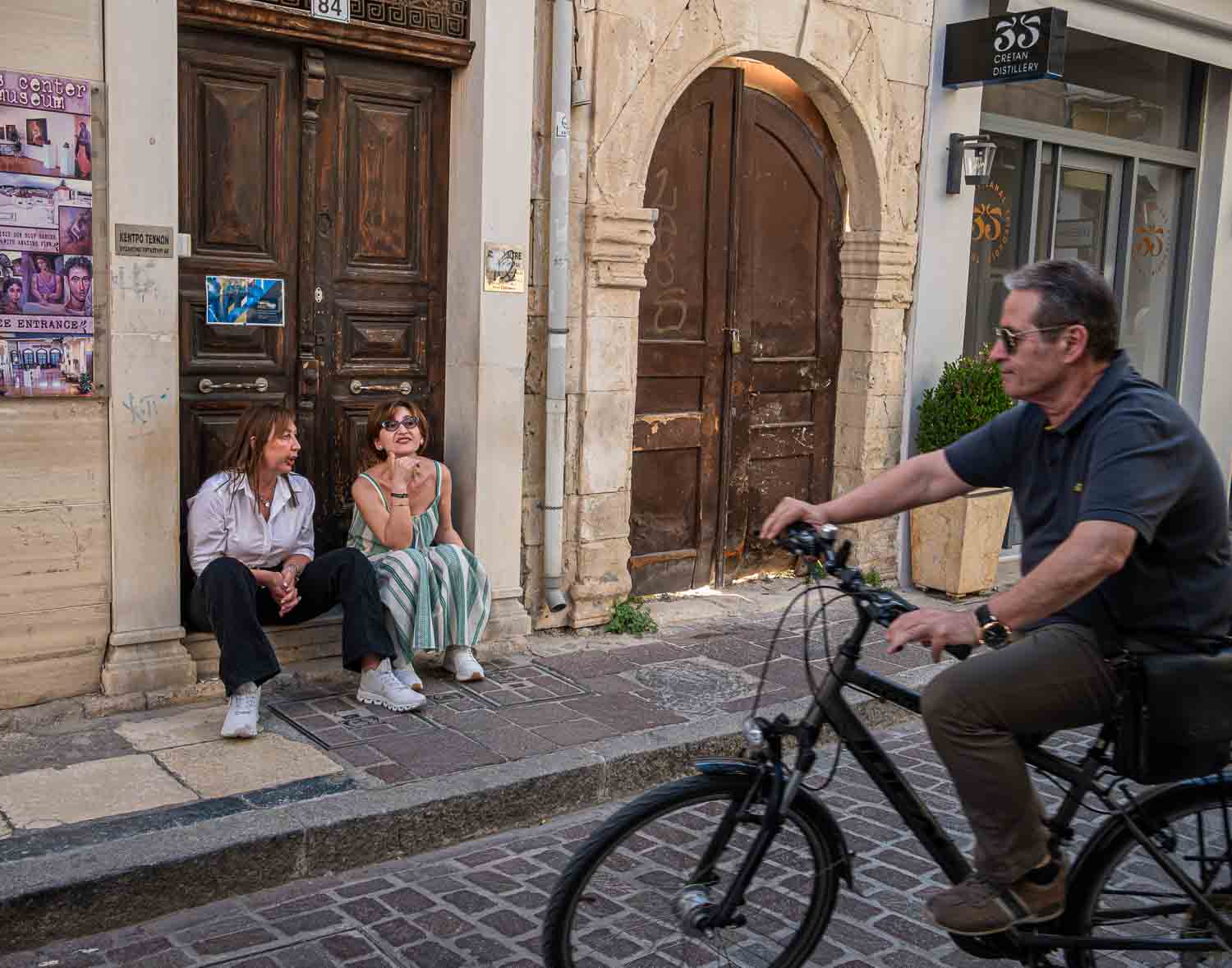

hanging out at bars and cafes,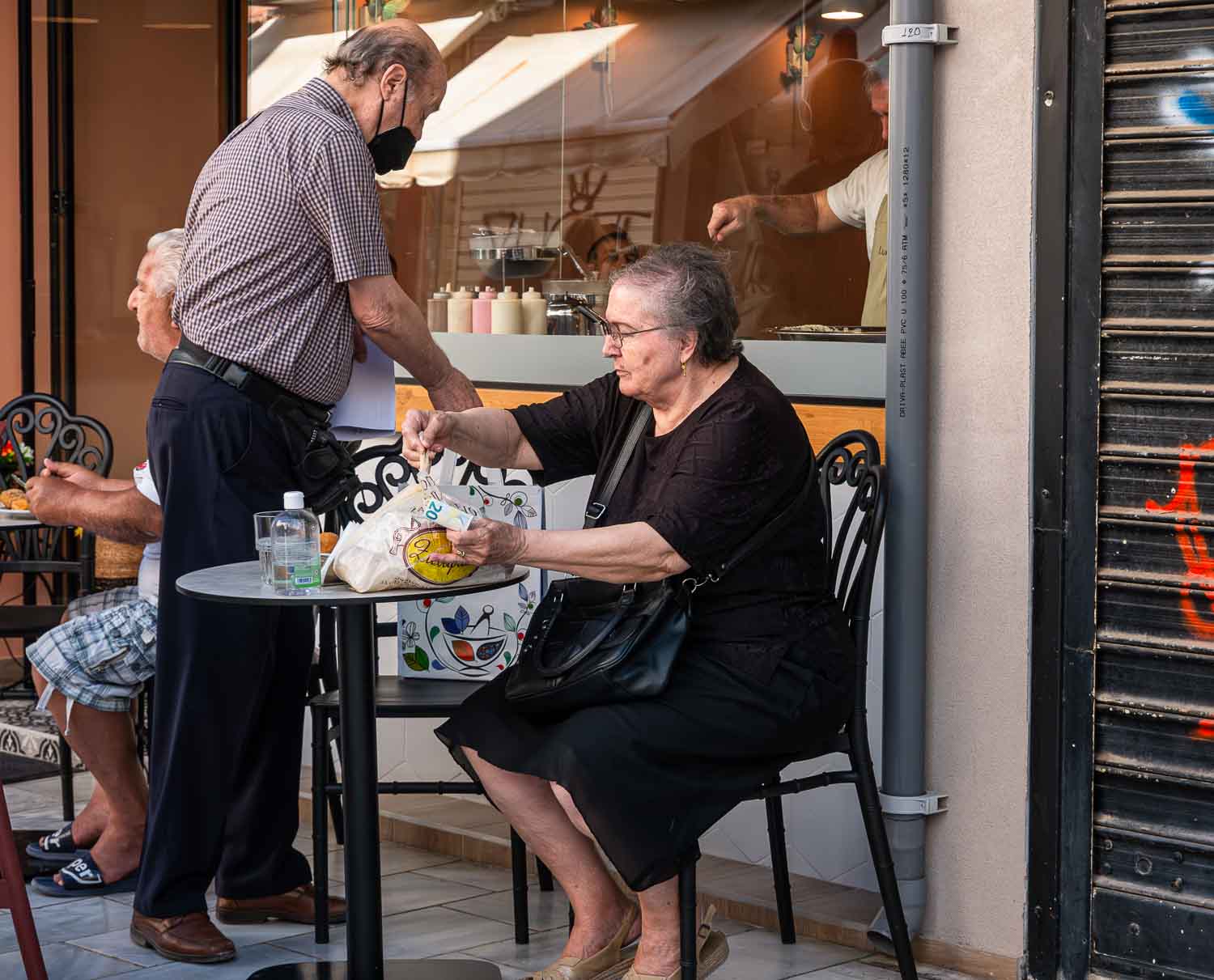
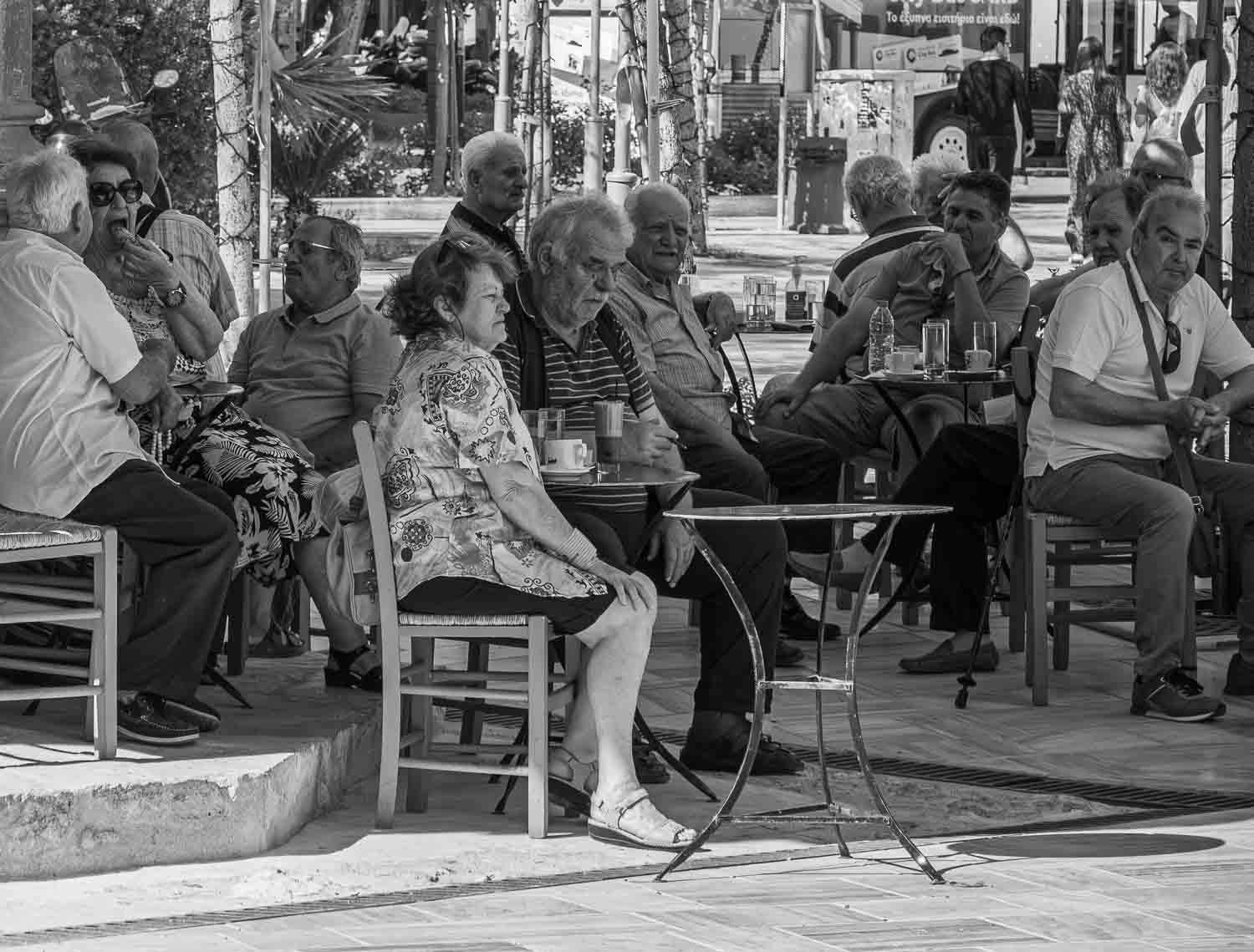
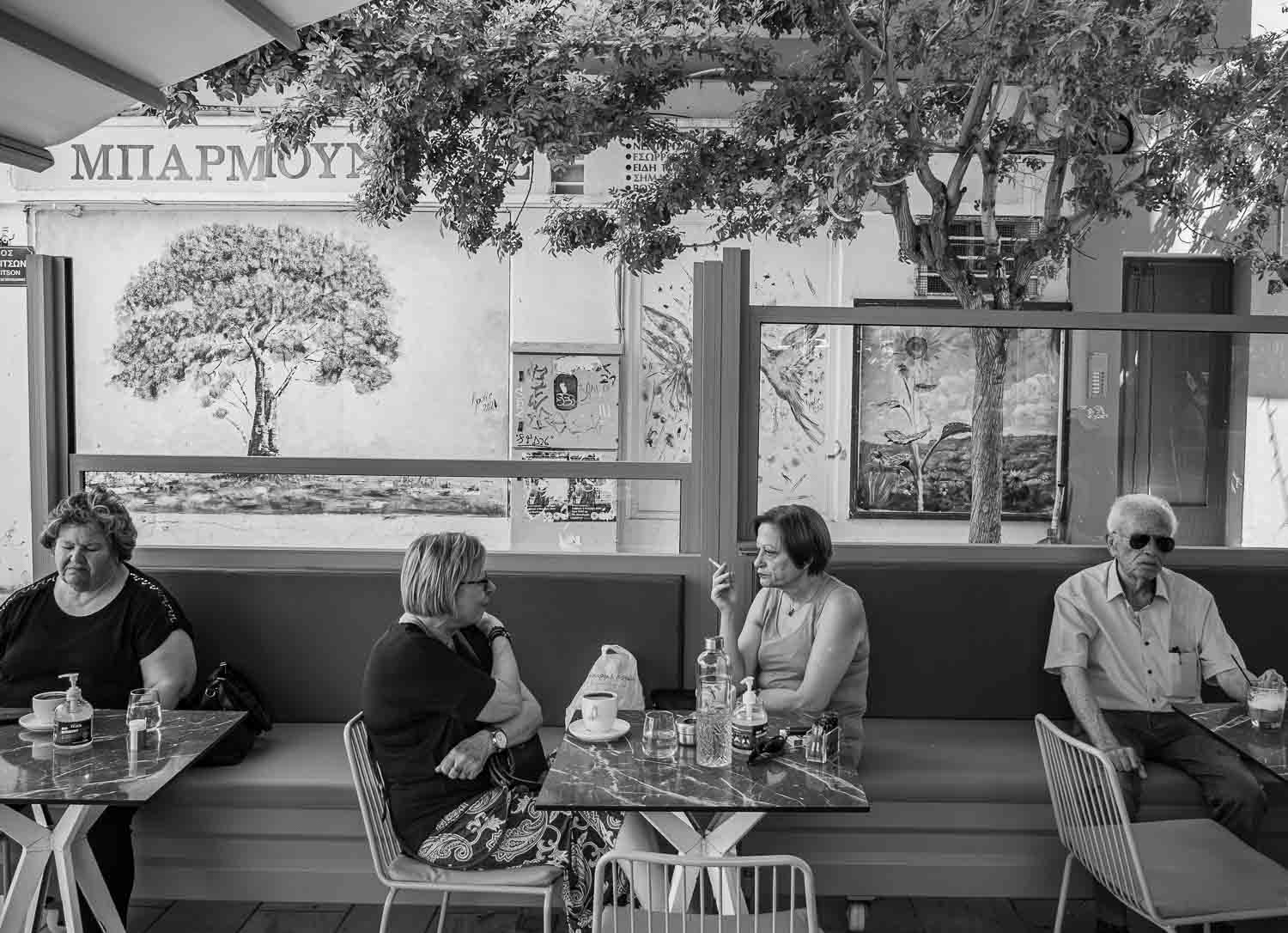
and shopping along the central market street.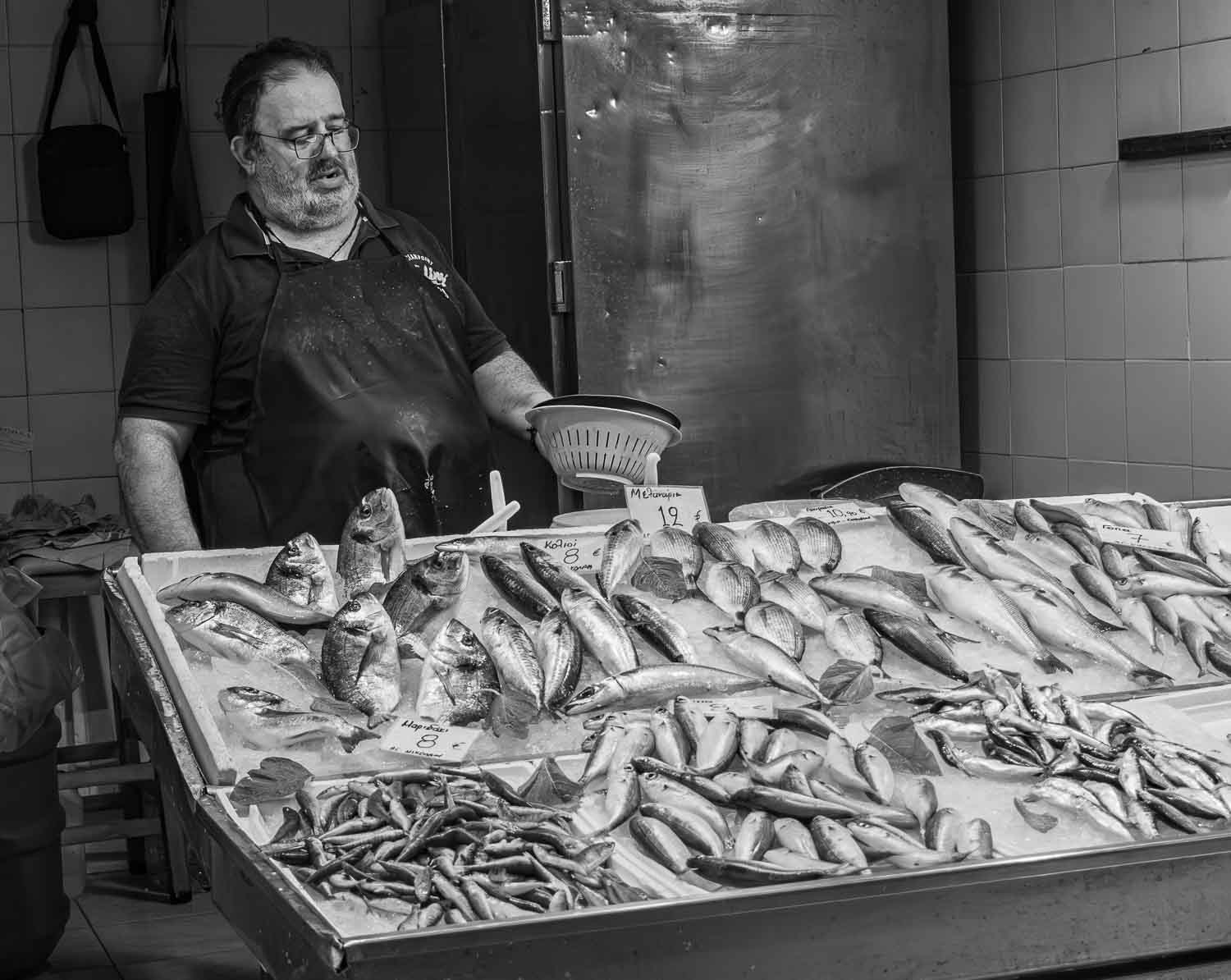
At Koules, the local fortress, we encounter another school excursion,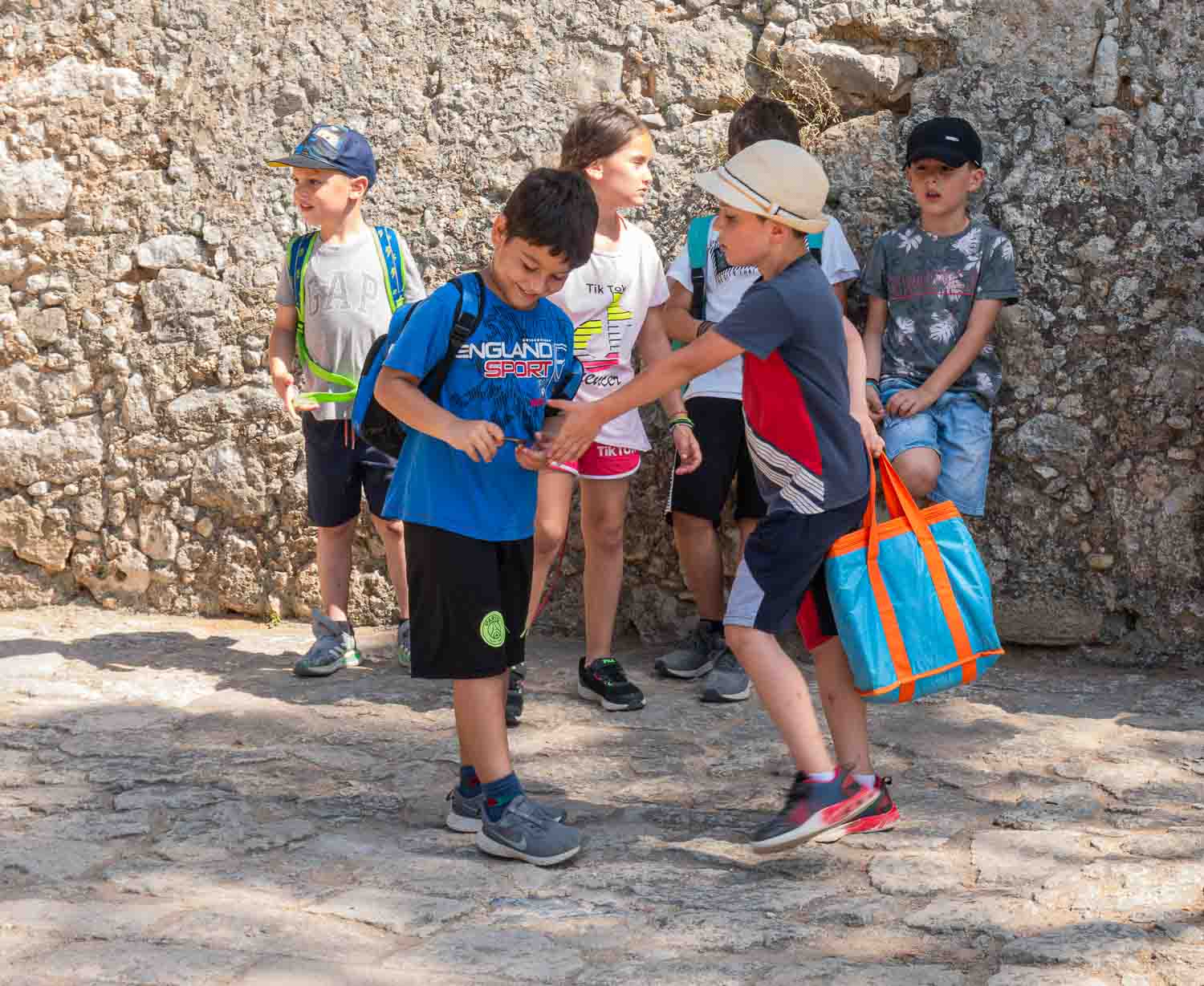
and at the 900-year-old Bembo Fountain at the end of the market street we watch the pigeons being fed.
One day sitting in a cafe watching world go by I see these two men. I wish I’d caught the moment when they hugged each other. I got the feeling from their exclamations and body language that they were old friends who had not seen each other for a long time. The hug was wonderful, uninhibited, real. Not one of your careful man-to-man North American/Australian hugs, lasting a second or two with a couple of slaps on the back to show how manly you are. No, this was a full-body hug brimming with happiness and affection and real connection. Then I watched them have the most joyous and animated conversation. They were delighted. I was delighted.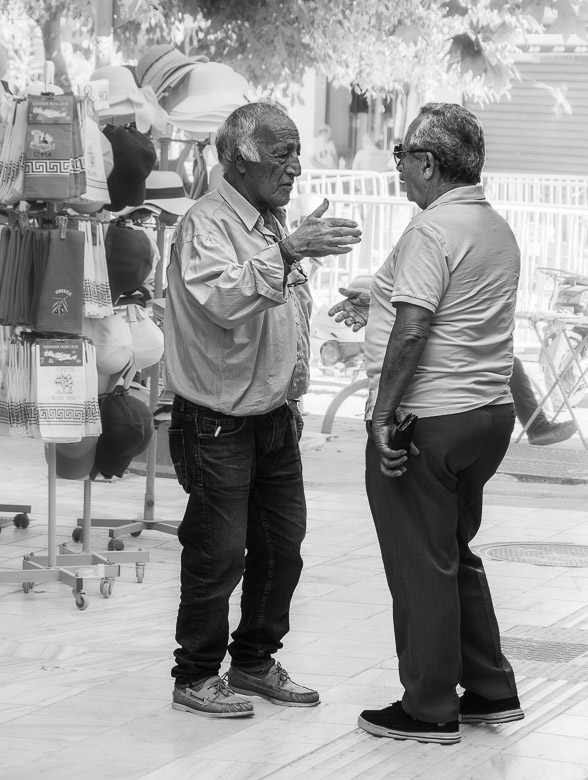
Another day, another cafe, and another colourful background. How could I possibly resist?
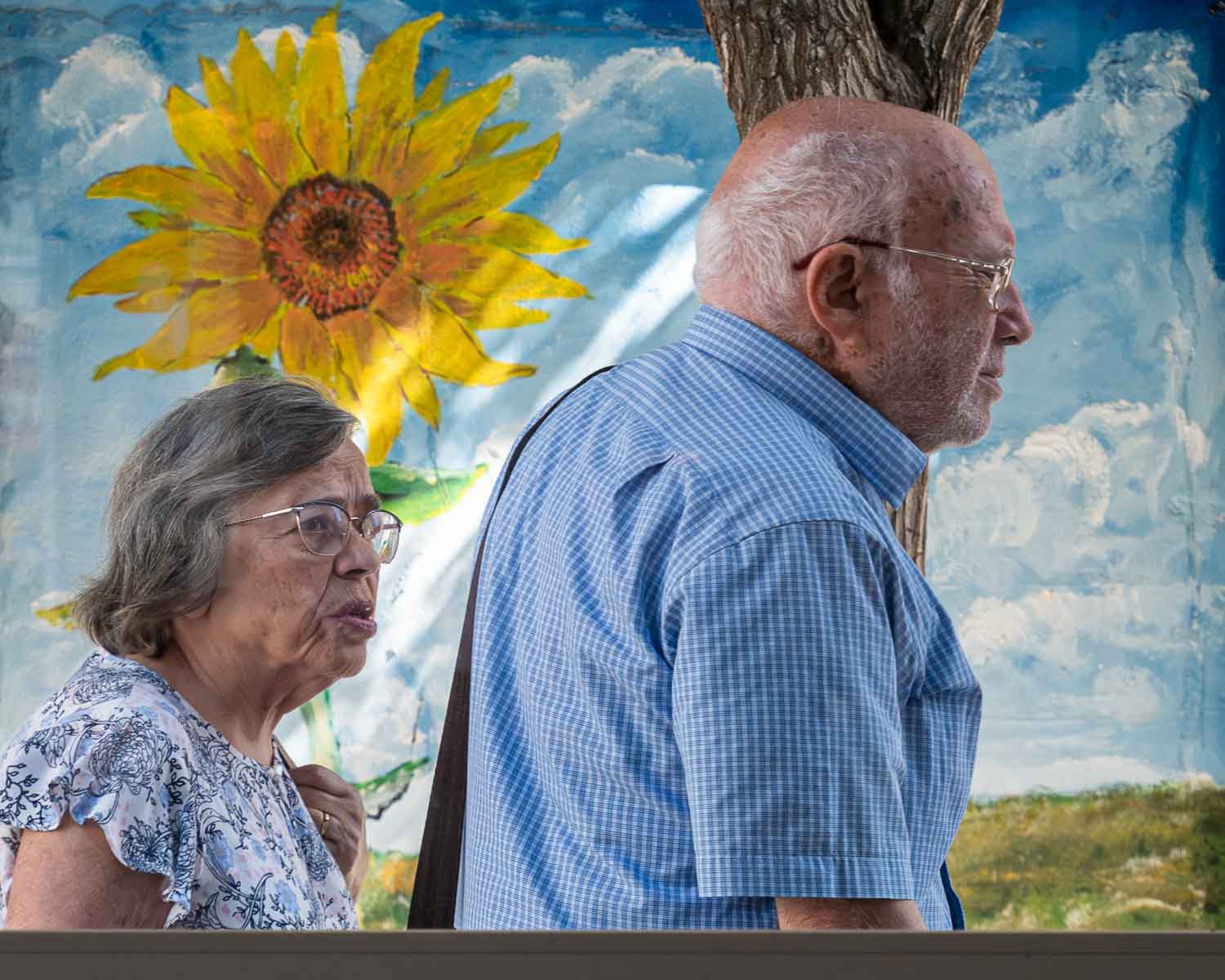
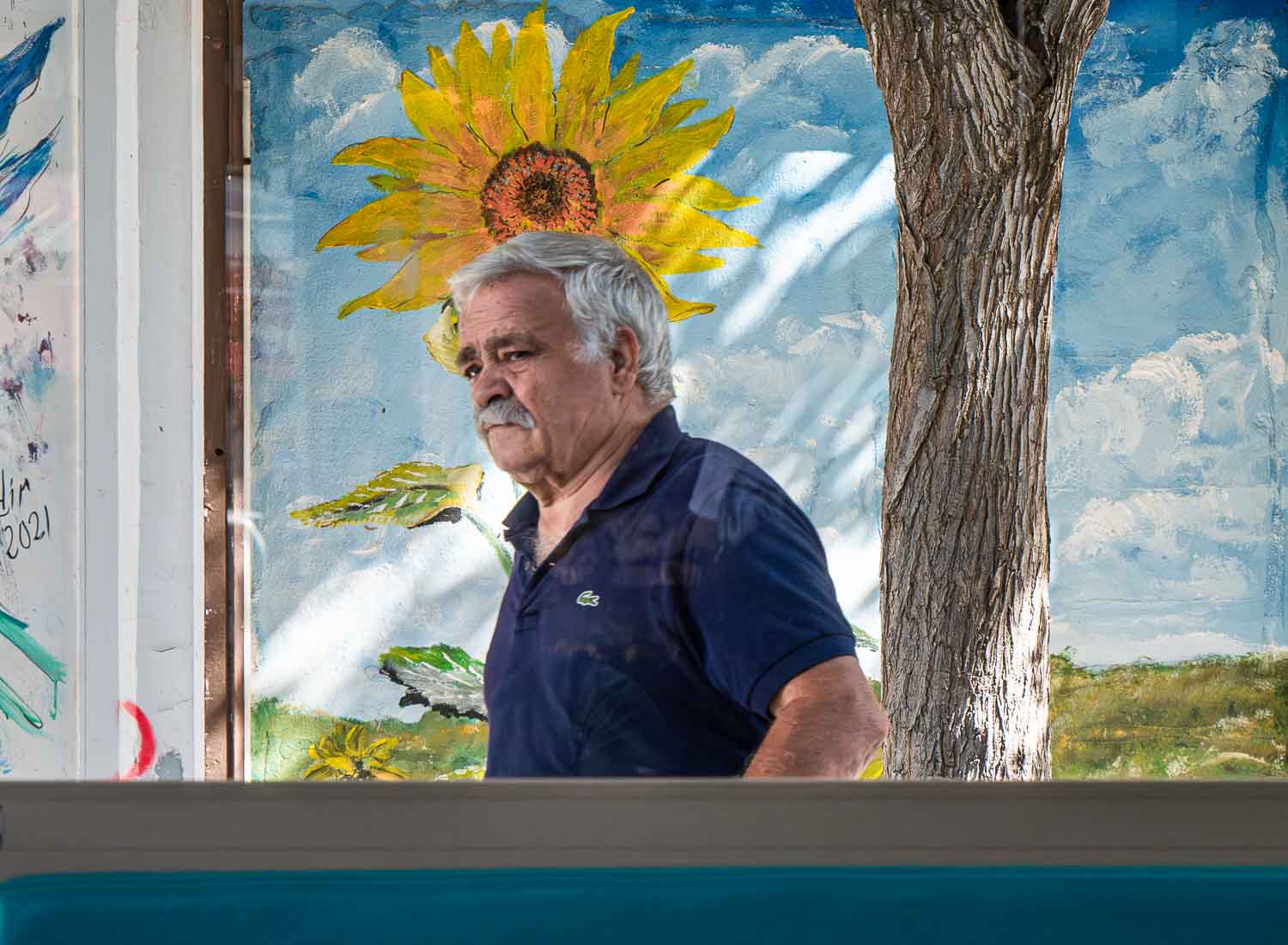

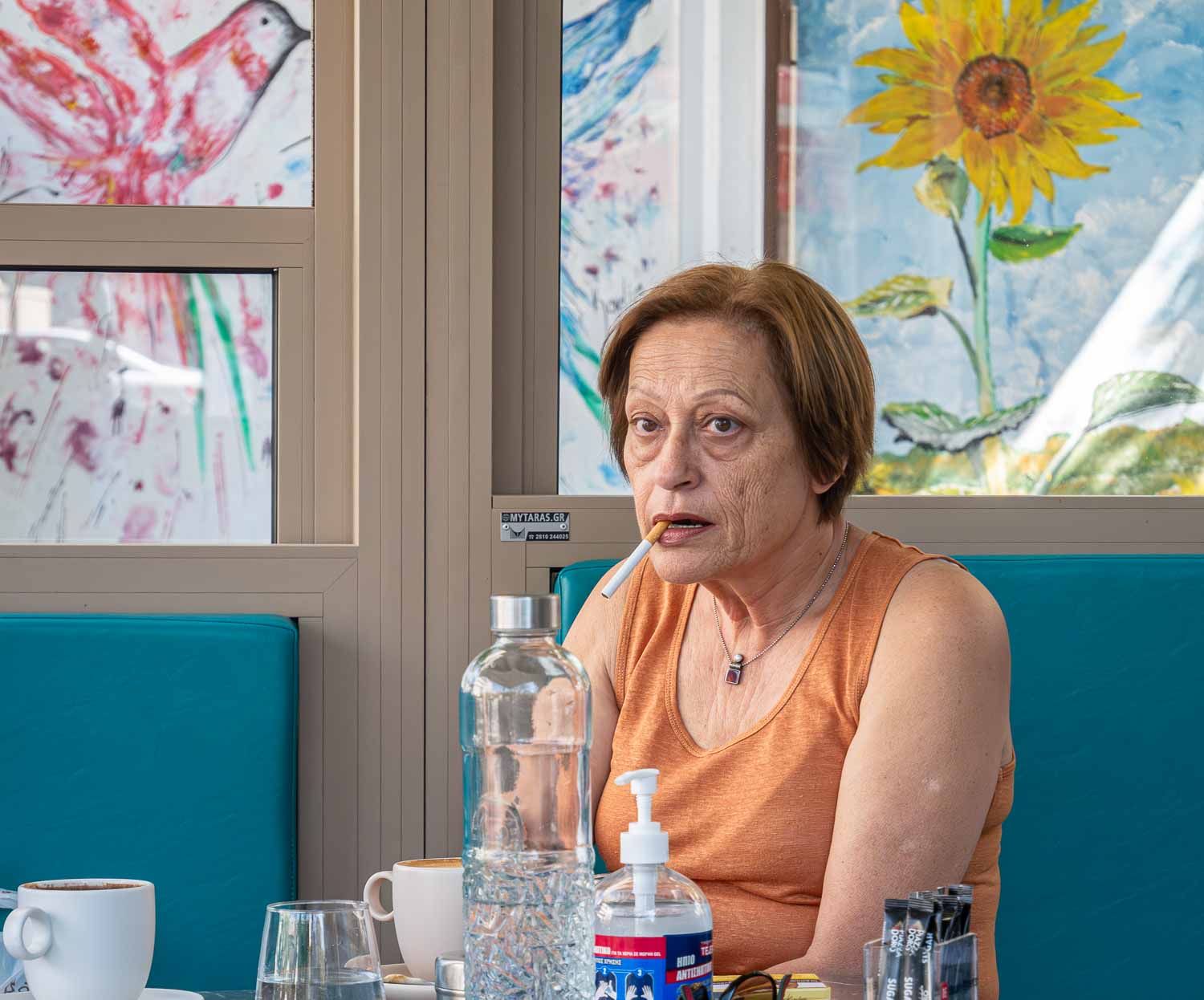

From Heraklion we take the ferry to Santorini, and then to Naxos where this next photo was taken,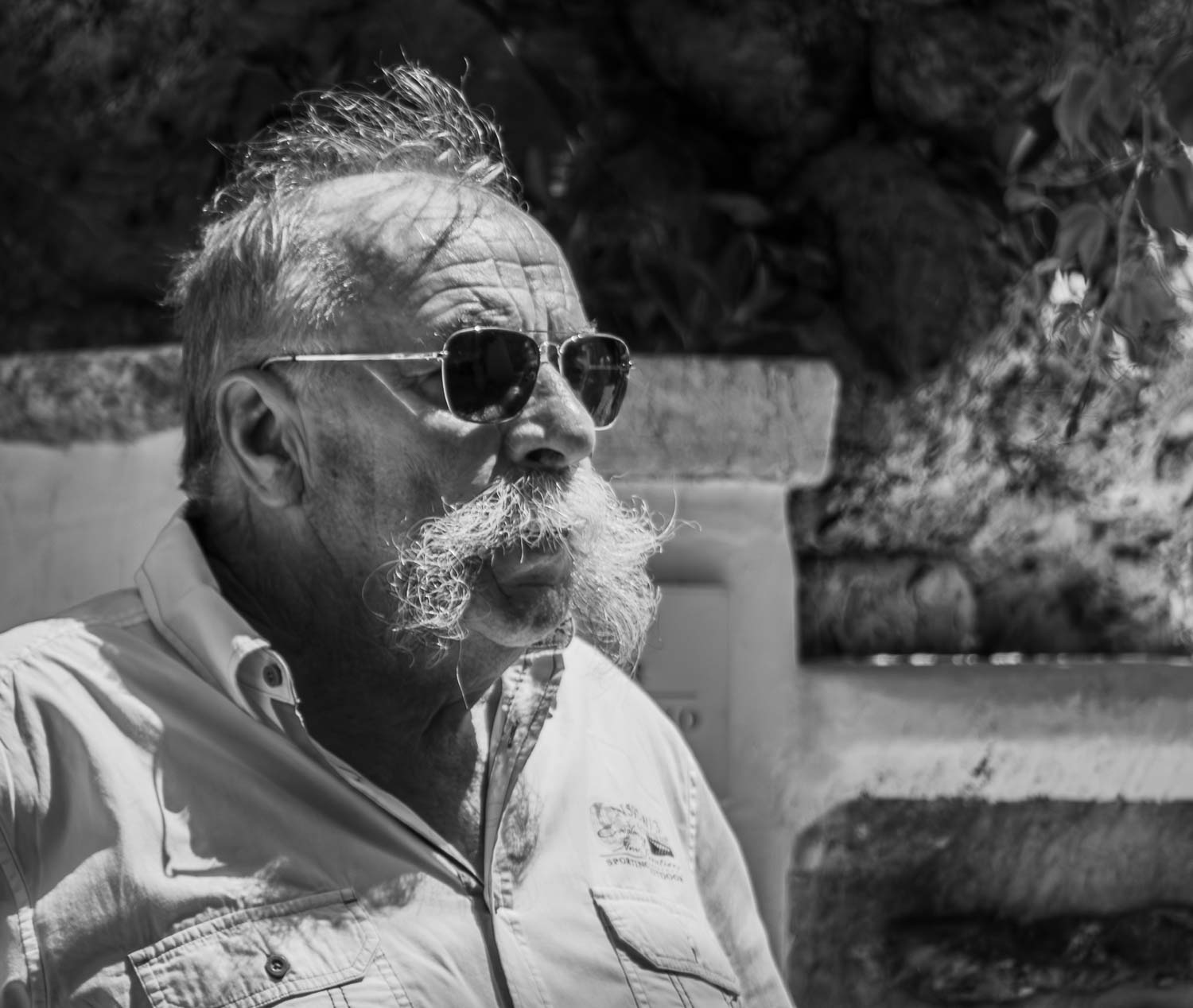
and from there a ferry to Milos. Plaka, the capital of Milos, sits atop a cliff. We follow the tiny local trail from Plaka down to the water and the fishing village of Klima. After exploring Klima we make a foolish decision; we decide to walk back up to Klima via the road. Hot. Steep uphill. Really hot. Dying from the heat. Relentlessly uphill. No shade anywhere. No sidewalks. Traffic. At the top, in the maze of pedestrian-only ancient stone streets we are searching for ice cream, and find a restaurant that offers some. While eating our life-saving ice cream I quickly snap this cyclist as he passes by.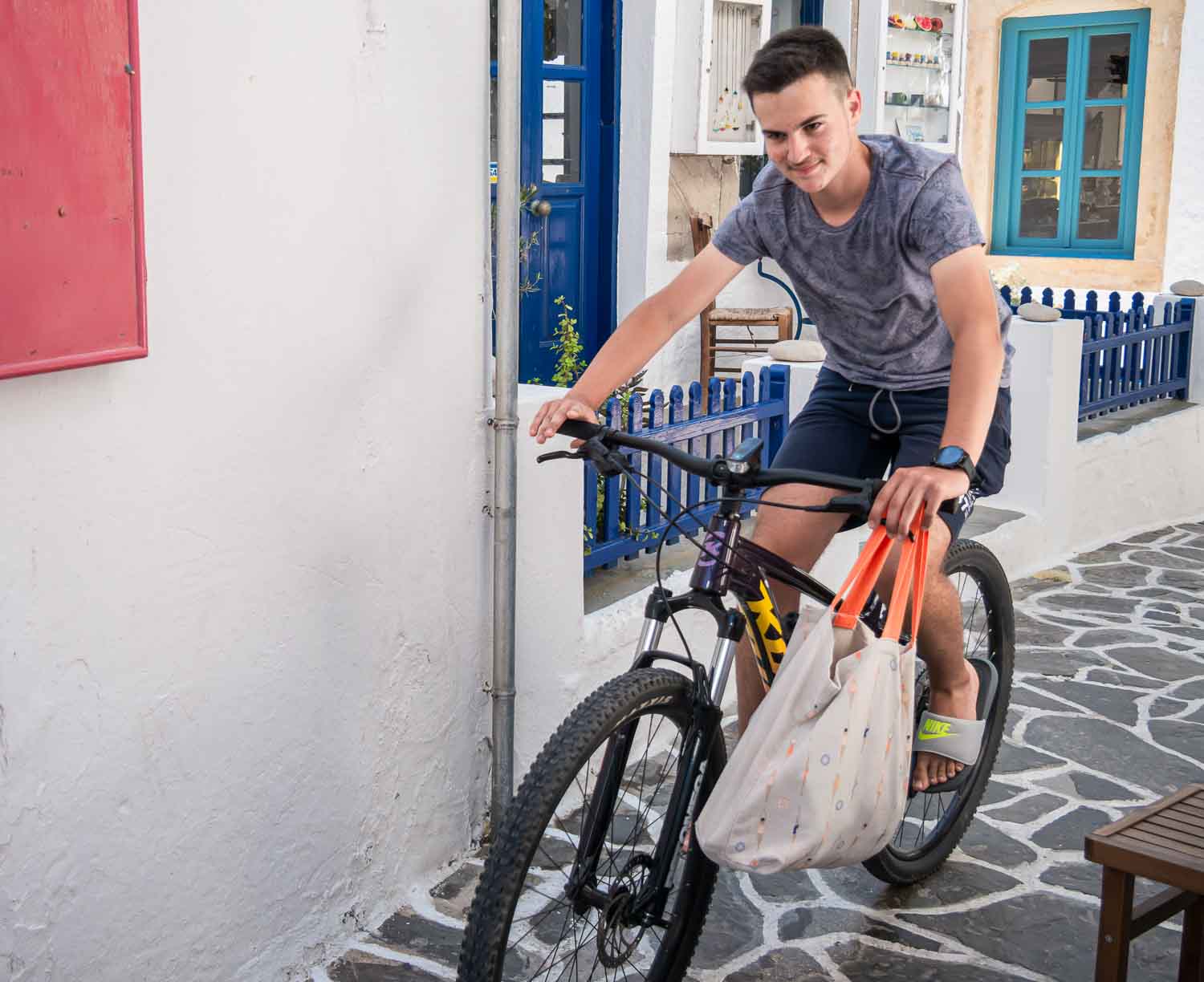
This is not all of them. I have a collection of photos of people at the beach. Maybe one day they’ll see the light of day too. But not just yet.
You can find all posts about Greece – Athens, Crete, Santorini, Naxos, and Milos here
Disclaimer: As a general rule, if a photographer is shooting in a public space, such as a street or a park, s/he will usually have the right to do so without the consent of the subjects. Generally speaking if it is in the public domain, you can take a picture of it. Photojournalism and street photography would not exist if permission to take the photo was required. If anyone objects of course I don’t take the photo, or if it’s already done I have them witness me deleting it. In some countries, eg India, people love to have their photo taken, and frequently request it. I always try to be discreet. Quite frequently it creates lovely interactions between myself and the subject. I have found it to be an overwhelmingly positive experience.
Next post: In 1980, the year I turned 30, I did an extraordinary four-month overland expedition through Africa from Port Elizabeth (now Gqeberha) on the south coast of South Africa up through the eastern countries, through central Africa to the western side of the continent, then north to Morocco, and so across the Gibraltar Straight to Spain and thence to London. There were ten of us living in an ex-army Bedford truck, and wild camping. I’m excited to finally start writing about and sharing this truly epic journey.
All words and images by Alison Louise Armstrong unless otherwise noted
© Alison Louise Armstrong and Adventures in Wonderland – a pilgrimage of the heart, 2010-2024.

Loved the photos. Greece, ahh such found memories of hanging out there. Hugs to you two. ❤️
LikeLiked by 1 person
Thanks so much Paulette. We loved Greece. Maybe one day I’ll get to return.
Hugs back! Hope you’re both well.
Alison
LikeLike
You are an expert at taking meaningful pictures of local people. Learning from you, during my recent visit to Thailand, I took more pictures of people than I usually do. It is the people that make a place.
LikeLiked by 1 person
Thank you so much Darlene! I so appreciate this. I think I’m getting better at it, and after all these years I’m much less shy about it. And yes, it’s the people that make a place. So good that you’ve started taking pics of them. It really is very very rare that anyone objects.
Alison
LikeLiked by 1 person
Ah, the orphaned photo files. I have lots of them. Wonderful slice of life series.
LikeLiked by 2 people
Thanks so much Cindy. Soooo many photos! I’m not surprised you have lots of them too. I still have more and they’ll probably not see the light of day. It’s the blessing and the curse of digital photography.
Alison
LikeLike
Love the little peekaboo girl and the old guys not hugging!
LikeLiked by 1 person
Thanks Jo. Those are my faves too – when I capture some spontaneous interaction.
Alison
LikeLiked by 1 person
Ah, how lovely to be back in Greece! The two men hugging and the cafe with the sunflower painting are definitely my favorites.
And I am REALLY excited for this trip back to the past camping across Africa! 😀
LikeLiked by 1 person
I too enjoyed my foray back into the Greece files (though it did make me yearn a little to go back). That sunflower! Impossible to resist.
Africa coming up!
Alison
LikeLike
Love the old friends photos and your story to go along with. I also can’t wait to read your journey across Africa and Europe. Maggie
LikeLiked by 1 person
I so wish I’d caught the moment when they hugged – it was such a heartfelt slice of life in the best way.
I’m excited about sharing the Africa story. It really was epic – which means several posts.
Alison
LikeLiked by 1 person
Can’t wait!!
LikeLiked by 1 person
Greece is a lovely place and your pictures show it.🥰
LikeLiked by 1 person
Thanks so much Arlene. We loved Greece. It went to the top of the list as one of our fave places.
Alison
LikeLike
I wish I’d seen those two men hug. Look forward to the account of your African expedition.
LikeLiked by 1 person
I wish I’d photographed those two men hugging! It felt “European”, or maybe “Mediterranean”, or maybe just Greek, lol. There was no artifice or cultural stiffness.
Alison
LikeLiked by 1 person
Great photos, Alison! I especially loved the creativity of the Bubbles-Man.
LikeLiked by 1 person
Thanks so much Astrid. I watched Bubbles-Man for quite a while – so much beauty from such a simple place. I’ve seen the same thing in other places, but his way of doing it was definitely one of the best.
Alison
LikeLike
I love the feeling of life you give Athens and Greece with these candid shots ~ such a pure look at life. A Portrait of Greece is the perfect title for this post. I also like your description of the photos “languishing in an abandoned file waiting to become the chosen ones…” sums up life at times as well 🙂 If I had to choose a favorite, while I like the peek-a-boo shots, it was the capture and description of the “old friends who had not seen each other for a long time…” there is something timeless about it. And I see this in life every now and then, and it never fails to make me smile. Life is good 🙂
LikeLiked by 1 person
Thank you so much Dalo. I appreciate your thoughtful comment.
The old friends was such a lovely moment to see – a truly delightful slice of life. And yes, it made me smile. Life is good indeed.
Alison
LikeLike
What great photos!
LikeLiked by 1 person
Thank you so much. You have a beautiful website!
Alison
LikeLike
Lovely daily life pictures (Suzanne)
LikeLiked by 1 person
Thanks so much Suzanne.
Alison
LikeLike
The kids against the street art, and the older folks by the sunflower are my favorites!
LikeLiked by 1 person
Thanks Ruth. I too love the kids in front of the street art – it’s almost as if they’re a part of it with their colourful clothes. And there was no way I could resist the sunflower!
Alison
LikeLiked by 1 person
So many beautiful photos, Alison, especially the one with a priest. I love how you can capture strangers candidly in the street. It is a wonderful and creative form of photography I have yet to try. Thanks for sharing, and have a wonderful day. I very much look forward to reading all about your four-month overland expedition through Africa and beyond- I get a sense that it’s going to be epic. Cheers, Aiva 🙂 xx
LikeLiked by 1 person
Thanks so much Aiva. I was quite shy at first but I learned from my sisters, both of whom have done a lot of street photography. I love it as a way to capture the daily-life feel of a country.
Africa coming up!
Alison xo 🤗
LikeLiked by 1 person
🥰🥰🥰
LikeLiked by 1 person
When you take photos of people, do you have to get written permission? I don’t know much about that, so I usually just take photos of nature. But there are some marvelous expressions on people’s faces that I would love to ‘capture’ in a photograph!!
i am glad you are still able to travel from time to time. COVID really put a damper on travel all around the world.
LikeLiked by 1 person
Written permission is not required. Actually when photographing in a public place no permission is required (as per my disclaimer statement above). I’ve never asked for written permission. I rarely ask for permission, though I do so occasionally by holding up the camera while looking at the person. I was quite shy about photographing people initially, but soon got used to it. I do try to be discrete.
We’re not travelling these days, tho may go down to visit friends in the US in the summer.
Alison
LikeLike
Happiness is infectious. I can imagine you feeling delighted when you saw those two men hugging each other. This is one of the reasons why I love people-watching. Alison, I’m sooo looking forward to reading your story on that overland journey across Africa. It really sounds like a trip of a lifetime!
LikeLike
Oh I agree! Happiness *is* infectious, and those two men were just delightful. Their affection was so authentic. And playing peek-a-boo with the little girl. She was so cute.
Africa was definitely the trip of a lifetime – truly epic. I’m looking forward to sharing it.
Alison
LikeLiked by 1 person
Great portraits of life.
LikeLiked by 1 person
Thanks so much rabirius. 🤗
Alison
LikeLike